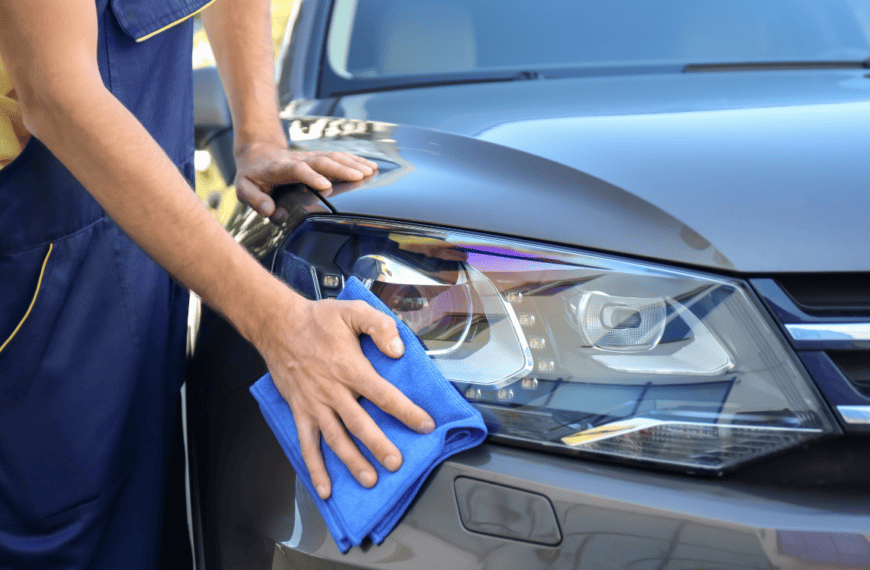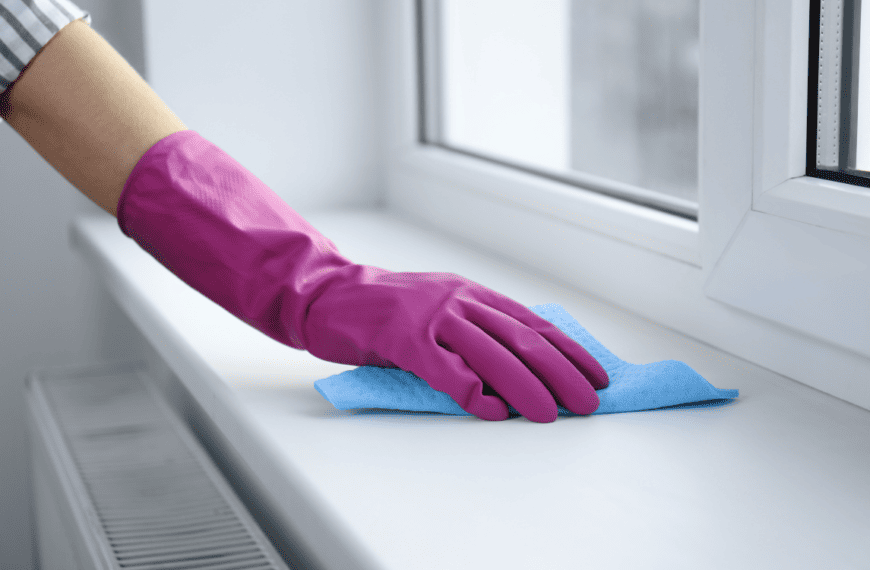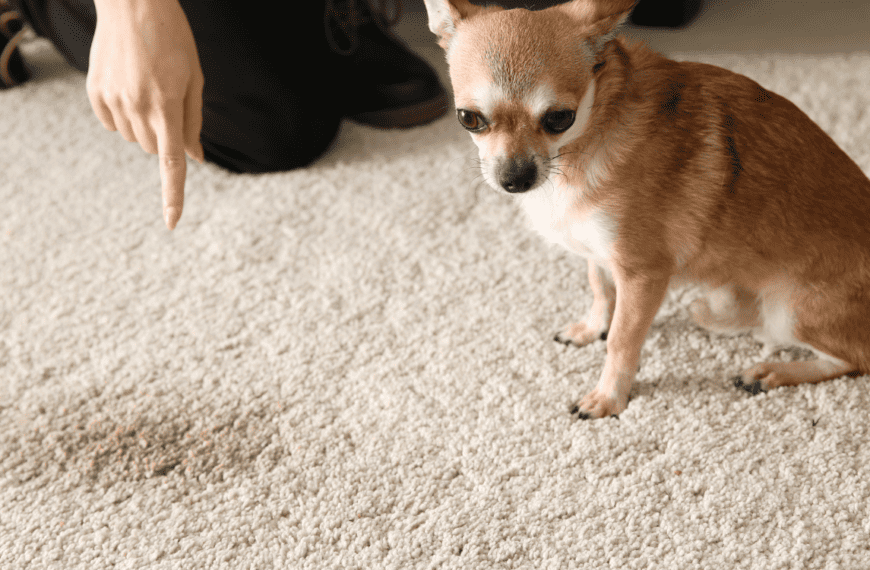Polyester is an excellent choice when you need durable furniture at a great price. That might be why it’s such a pervasive material, showing up in everything from plush chenille sofas to faux-leather recliners.
If you’ve got a fabric couch, it’s a safe bet that polyester is part of the blend. And you’ll love having it when the first accidental spill lands on your clean couch cushion.
With an informed approach to cleaning polyester furniture, the ease of earning stunning results will amaze you. Check out the super-simple cleaning process that will keep your polyester couch fresh for years!
How to Clean Polyester Couch Fabric
Cleaning a polyester sofa from top to bottom often only requires water-based cleaners and a vacuum. You may also be able to wash the couch cushion covers with the rest of the laundry for deeper cleaning.
Step 1: Vacuum First
- Vacuum cleaner
- Upholstery brush attachment
- Crevice attachment
- Lint roller
Vacuuming is the first step in deep cleaning couches of any material. Clearing away loose crumbs, pet hair, and other debris will make the cleaning solution more effective and prevent dirt from digging into the polyester upholstery.
Use your vacuum’s upholstery attachment to lift dirt and remove pet hair. For challenging nooks and crannies, pleats, and piping, attach the vacuum cleaner’s crevice tool.
If your vacuum cleaner doesn’t have an upholstery attachment, you can use a soft-bristled cleaning brush (e.g. horsehair or nylon brush) on your polyester couch. A soft brush is the best tool for dirt dug into cushion welts and awkward corners. You could also use a sticky lint roller after brushing to remove stubborn pet hair and loosened debris across the cushions.
Step 2: Apply the Cleaning Solution
Polyester, a synthetic fabric, adds durability and economy. Though it often stands alone in sofa fabrics, it also lends its benefits in blends with cotton, nylon, acrylic, and several other natural or synthetic materials.
The fabric combination will affect the look and feel as well as the cleaning solution you can use to clean a polyester couch. Always check the cleaning code first to determine the best upholstery cleaner.
Tip: You can find the cleaning code under the couch cushions or, if it’s a reclining sofa, on the underside of the footrest.
| Code | Meaning | Product Examples |
| W | Water-based cleaner only | Resolve, Chemical Guys |
| S | Solvent-based cleaner only | ForceField |
| W/S | Water-based or solvent cleaner | Any upholstered furniture cleaner |
| X | No cleaning solution (vacuum only) | Require professional upholstery cleaners |
If polyester is the primary material in the sofa fabric, you can likely use a simple DIY polyester couch cleaner using vinegar. The following is a basic solution to freshen and deodorize your sofa. Only use this cleaner for a “W” cleaning code.
- 1–2 teaspoons dish soap or mild laundry detergent
- 2 tablespoons distilled white vinegar
- 2 cups water
Mix the ingredients in a spray bottle. You can use the spray as a general cleaner during your regular deep clean or as a targeted solution to treat fresh stains.
Your DIY spray cleaner is an excellent general-purpose refresher for your polyester couch. Lightly spray the entire surface. Once damp, gently wipe down the sofa with a clean cloth.
Step 3: Let the Sofa Dry
Another cleaning convenience of polyester fabrics is their hydrophobic nature. They don’t want to absorb water if they can avoid it. Polyester couches will air dry relatively fast, and you can speed up the process by opening windows and running a fan.
Step 4: Fluff the Sofa
The vinegar and dish soap cleaner offers several advantages as part of regular sofa upkeep. While the soap dislodges dirt and grease, the vinegar reduces the polyester’s staticky tendencies (a notable benefit for pet owners) and breaks down hard minerals to maintain softness. Still, even a gentle cleaner like this can leave polyester fabrics feeling a little stiffer than usual.
A soft-bristled upholstery brush helps return polyester fibers to a plush, pliable state, making them more comfortable and resilient. Gently fluff the material after it dries, checking for any missed stains as you work.
How to Remove Stains from Polyester Fabric
Unfortunately, couches rarely escape the abuse of everyday life. Before long, your polyester couch will suffer a stubborn stain from a pet accident, fumbled lipstick, or spilled drinks.
Thankfully, as one of the more versatile and hardwearing fabric options available, polyester also makes cleaning upholstered furniture a breeze. Here are a few cleaning techniques to test out on all kinds of normal stains.
Tip: Always spot-test any new cleaner in an inconspicuous area, letting it dry to see if it discolors or damages the material.
Dish Liquid and Warm Water
Polyester can resist damage in many ways, but greasy stains from foods or makeup are often problematic. If you don’t have an upholstery cleaning product, dish soap is one of the best DIY solutions.
- Mix a few drops of dish liquid or a mild detergent with warm water in a bowl
- Using a clean cloth dipped in the sudsy water, blot the stain repeatedly
- Follow up with a damp clean cloth to rinse as much soap from the material as possible
Soak up excess moisture with a paper towel before letting the couch air dry. If the spot is overly saturated, use a hair dryer on a low setting to speed up the drying process.
Baking Soda
As a deodorizer and moisture absorber, baking soda is a critical deep-cleaning tool around the house, and polyester couches are no exception. You can apply baking soda to deal with various wet and dry stains, as both oils and pet soils respond well to the amphoteric compound.
- Wet stains: Sprinkle baking soda on wet stains, such as pet urine, letting it sit for at least 30 minutes to absorb the moisture and neutralize the acidic odor molecules. After vacuuming, use your DIY vinegar spray to spot-clean the area, using a damp cloth to blot it up
- Dry stains: Mix baking soda and water to form a paste. Gently work it into the stain with a dampened sponge to lift it. Rinse the paste away with a clean, damp cloth
How to Remove Chewing Gum from Polyester
Chewing gum requires a different cleaning approach than typical stains. When your children dispose of their gum on the living room couch, you need to solidify it to make it scrape away easily. Trying to pick it up while soft will often make it spread or push further into the polyester fibers.
The most efficient way to remove chewing gum is to freeze it by rubbing it with an ice cube. Once hardened, the gum will easily pull away from the material.
Cleaning Tips for Polyester Upholstery
Polyester is inherently straightforward to clean, but that doesn’t mean you can’t make it even easier. To maximize your sofa’s lifespan while minimizing your effort, follow these tips:
- Vacuum your couch weekly to prevent hard-to-clean dirt and dust buildup
- Always vacuum before wet-cleaning stains
- Follow several rounds of light cleaning rather than using tons of cleaner at one time to avoid making the fabric overly stiff
- Wash removable cushion covers in cold water if possible
- Wear rubber gloves and a mask and open windows when using harsh commercial cleaners
- Keep a spray bottle of fabric cleaner handy to quickly handle fresh stains
- Be proactive by using a stain blocker like Guardsman Fabric Defense
Is a Polyester Couch Easy to Clean?
Polyester is one of the easiest sofa materials to clean. It resists warping from water cleaning solutions, dries quickly, and holds up against abuse and abrasions better than many alternatives. When stains set in, you can pick nearly any solution to make cleanup efficient, from convenient DIY sprays to targeted enzyme cleaners.
What Do You Clean Polyester With?
Commercial cleaners like Resolve are efficient at handling stubborn stains on most “W” or “W/S” coded polyester couches. These options are typically best when you need to spot clean polyester furniture to eliminate stains and remove foul odors.
If your sofa accepts water-based cleaning solutions, you have numerous household cleaners you can employ, including:
- Baking soda
- White vinegar
- Dish liquid
- Hydrogen peroxide
- Rubbing alcohol
- Lemon juice
Always spot-test any solution before doing a comprehensive cleaning job. You’ll need to use a solvent cleaning solution if you have an “S” code polyester sofa. For “X” code furniture, professional cleaning is your only option for removing stains.
How Do You Clean Polyester Fabric?
Cleaning your sofa 1–2 times a year will keep it looking, smelling, and feeling fantastic for the long term. A standard cleaning involves vacuuming followed by a light cloth cleaning with a DIY vinegar spray.
When it has a funky aroma without any accompanying stains, you can sprinkle baking soda across your entire couch for immediate deodorizing. Let it sit for about 20–30 minutes to neutralize the smell before vacuuming.
What Is the Cleaning Code for a Polyester Couch?
The cleaning code for 100% polyester couches is “W”. But you may find blends with natural materials that make it an “S” code requiring dry-cleaning solvents or an “X” code needing a professional cleaner. If low maintenance is a crucial buying factor, always check the code before picking your sofa to ensure it has a “W” or “W/S” code.
Keep Your Polyester Couch Looking Its Best
Whether polyester or otherwise, no couch will last without proper upkeep. With regular cleaning, you’ll keep your beloved family sofa around as long as possible, saving you time and money while reducing your impact on the planet. When you see how quick and easy it can be to maintain the upholstery, you’ll only have one more reason to love your polyester couch.









